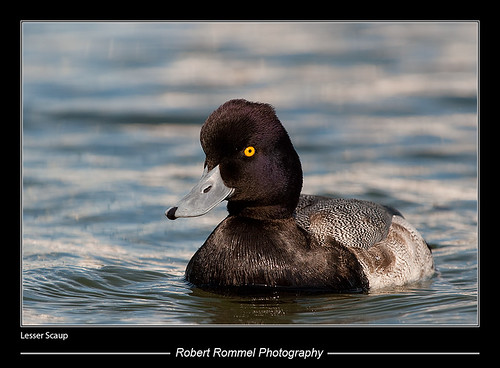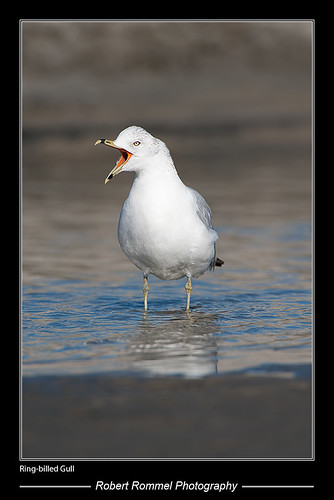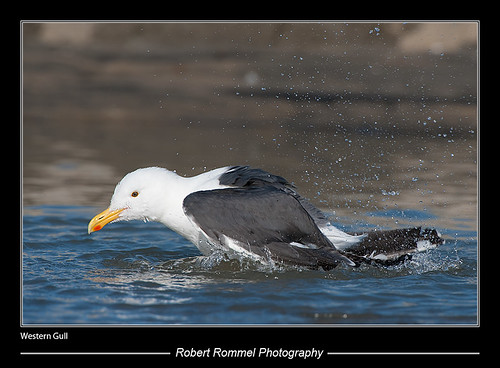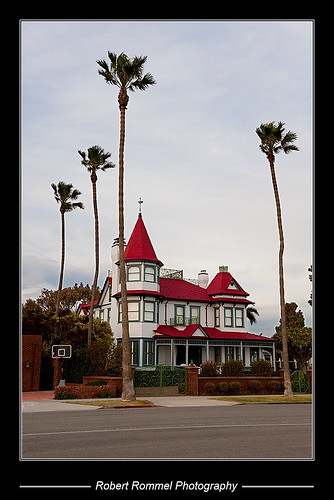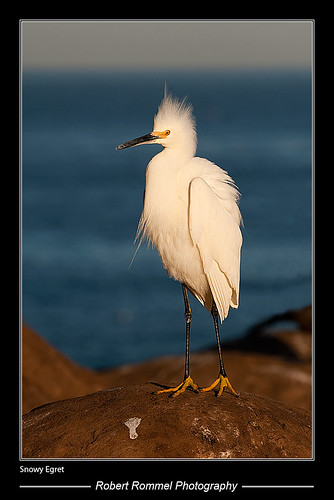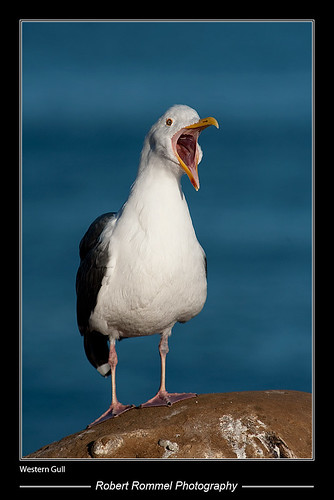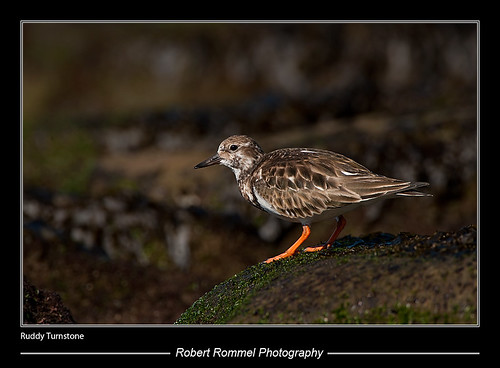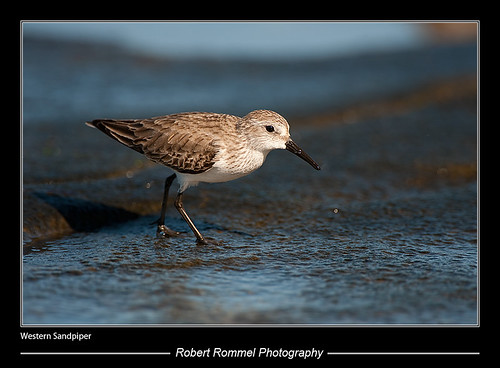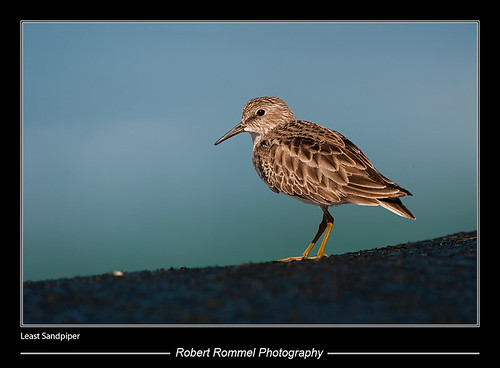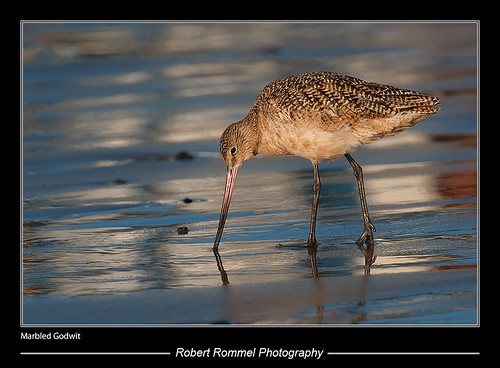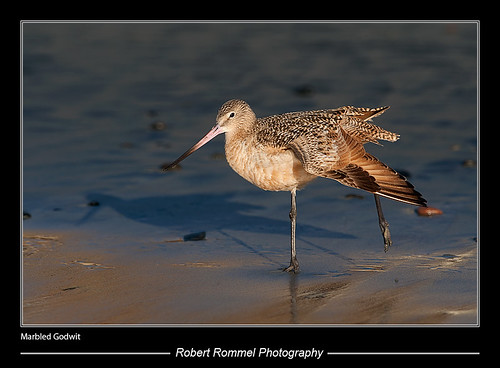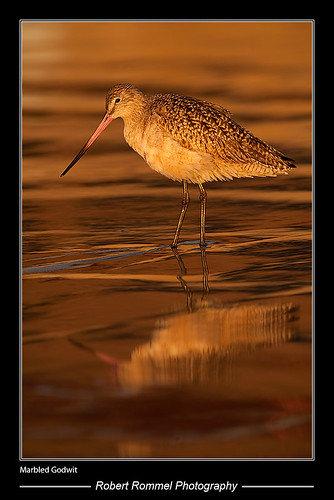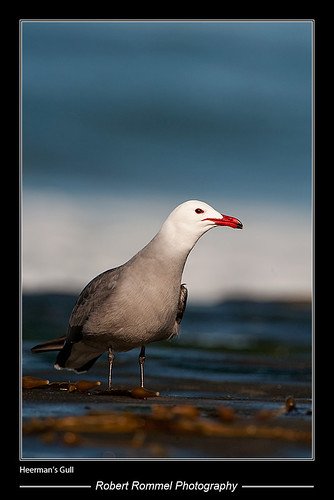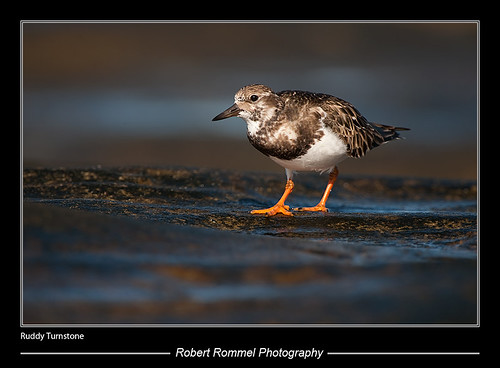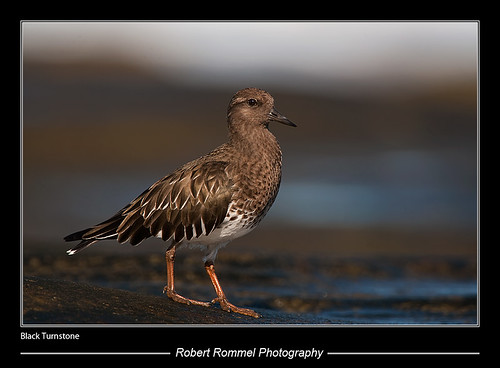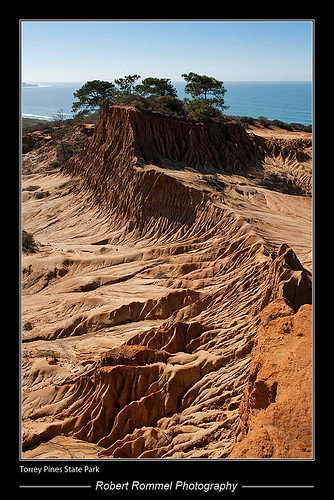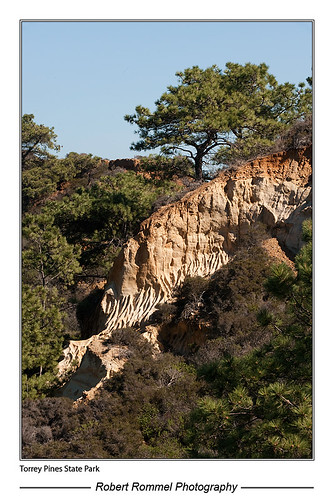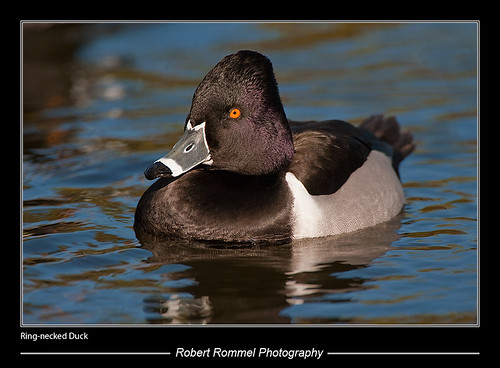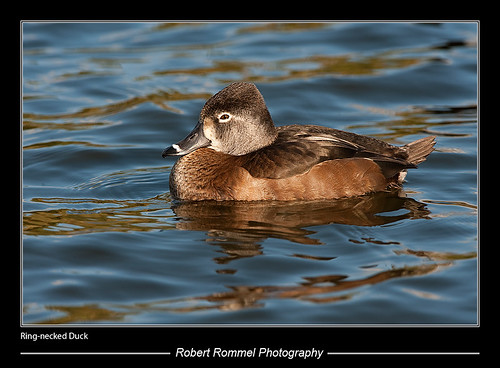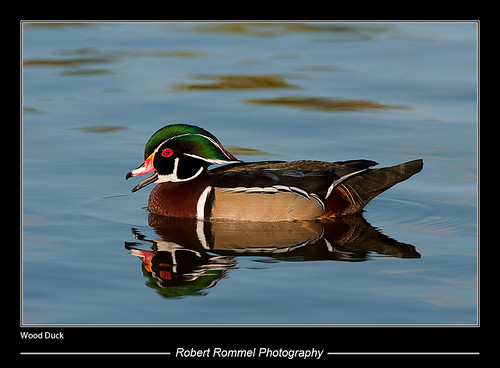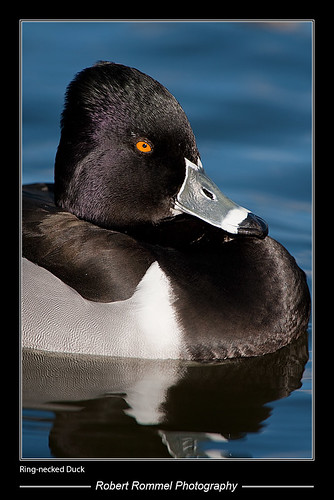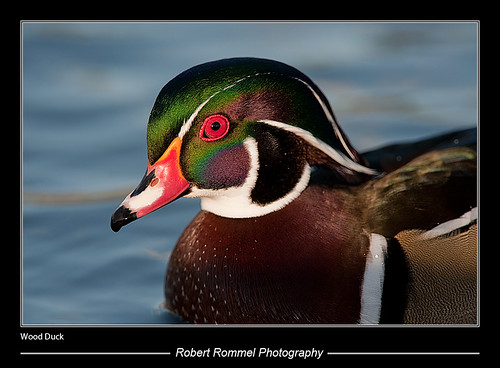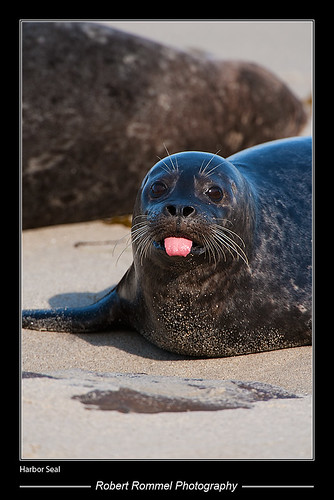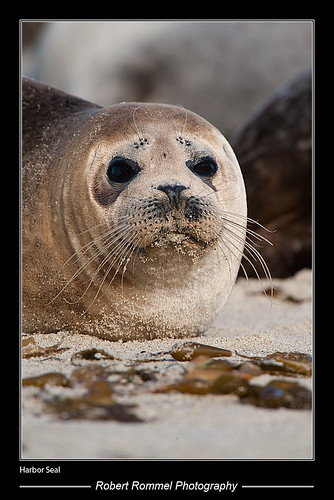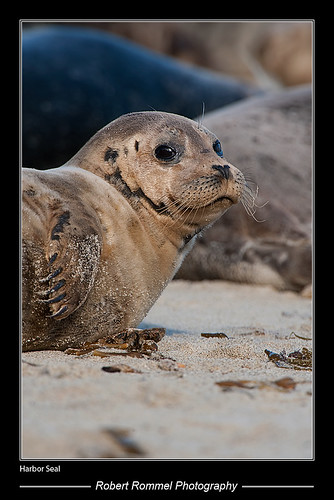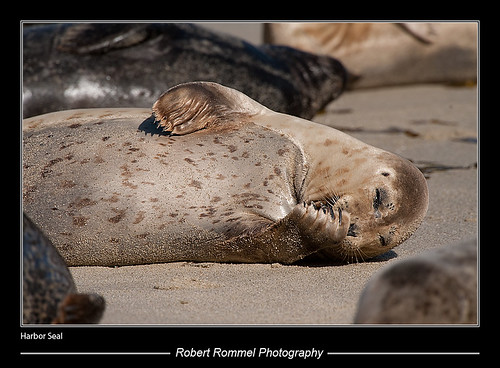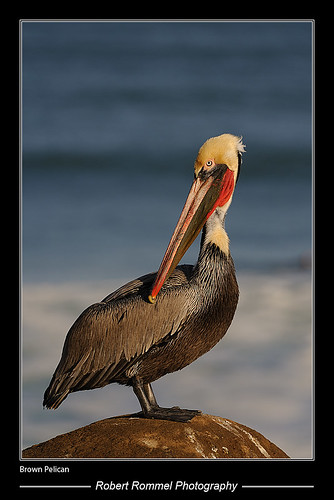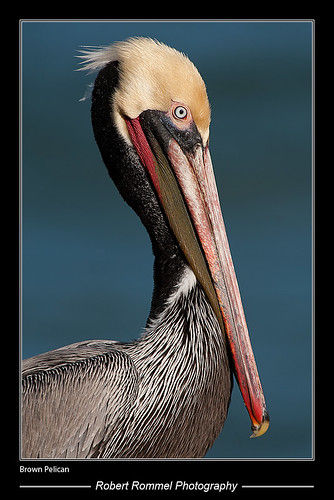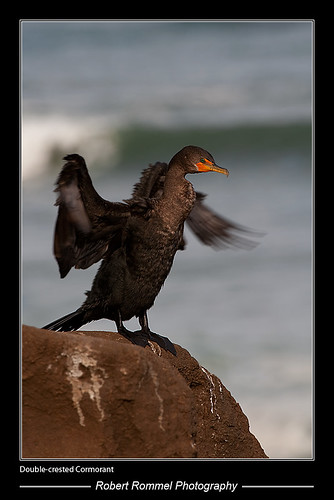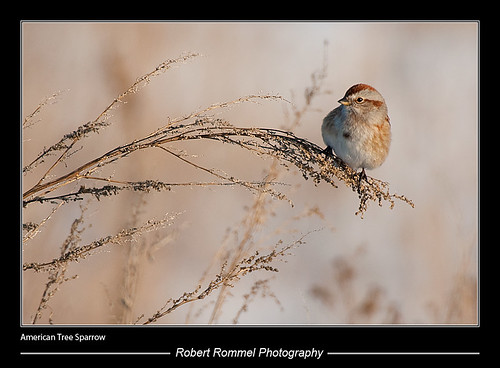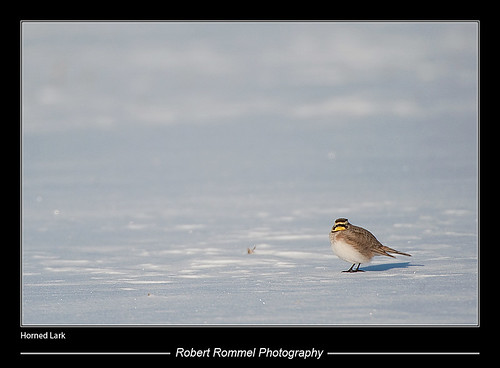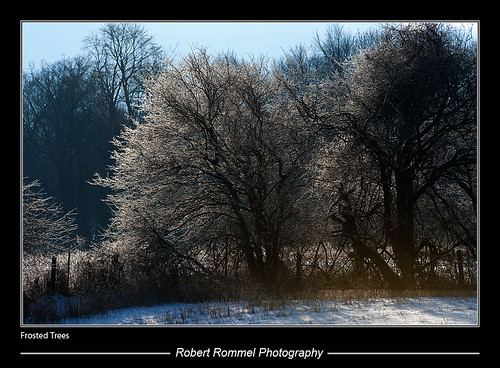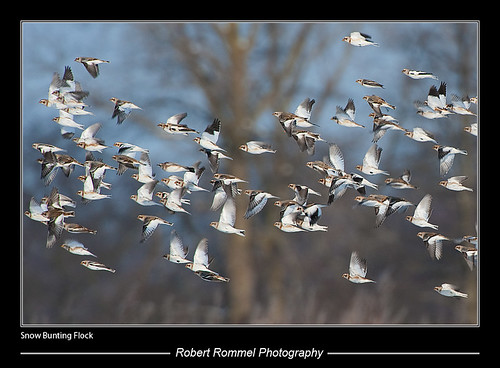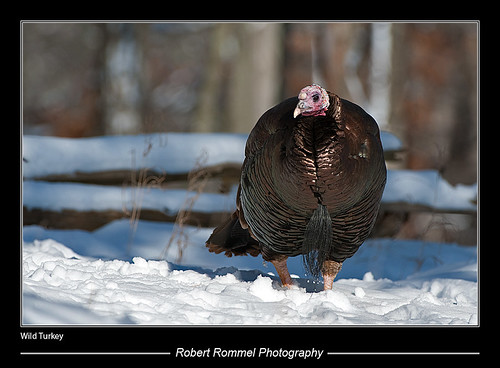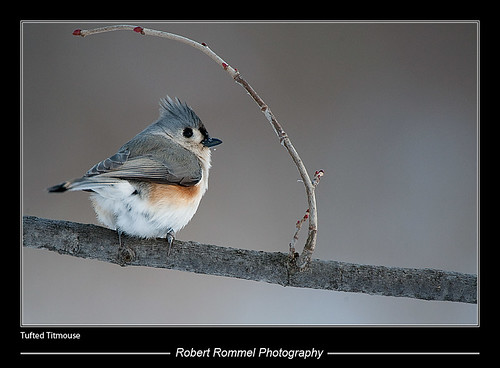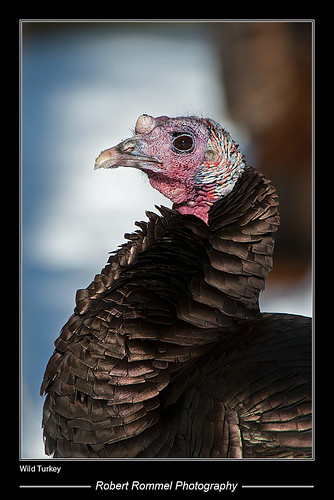(January 25th) For the afternoon I headed down to two new locations known for being good for water birds. The first was a duck hangout. I wanted to go there because it is one of the best locations in the country to shoot Lesser Scaup. This particular species is often quite skittish or stays far from shore. Here if I just subjected myself to crouching on sharp rocks and slopping in thick mud, I could have a chance to get close. Sure enough, a sore bottom later, I came out with quite a few shots of this great species. In this shot, a male is swimming right at me at close range.
There were about twenty or so scaup that swam near me. The females were mixed in with the males. Although they lack the metallic sheen and some of the contrasting colors of the males, for female duck species they are quite attractive. Scaup are diving ducks like the Ring-necked Ducks I was shooting the other day. They would dive searching for food and periodically spend a bit of time preening. This female has just emerged from a dive and you can see how the water just beads up on their feathers keeping them dry.
I was in for a treat when a pair of Redheads showed up to check out what the scaup were doing. Some birds can be very brave and others very shy. Some species tend to be braver than others, but differences exist within a species too. Birds that are accustomed to human contact are often considerably braver than species that rarely encounter humans. But sometimes you just can't explain why some are shy and others are brave. That was the case with this pair of Redheads. The male started to approach and gave me time for all of 2 shutter clicks before he decided to turn back and go away. The female on the other hand had no reservations and came within a couple of feet of me and stayed until I left. No idea why the two were so different, but here's one of the shots of the male.
I wrapped up with the ducks and headed to the beach. Gulls were the order of business for the end of the day. There was a small pool of water near the beach that gulls just loved. At the banks of this pool one Ring-billed Gull was all worked up. It made sure to let everyone known that something was on its mind.
The pool itself was actively being used by the gulls. They were drinking from it and bathing in it (gulls can drink seawater). The bathing was quite comical so I had a great time watching them at it. This Western Gull was paddling away in the pool splashing every which way. Just like the ducks, gulls rarely seem to get wet.
I had a great time with the gulls in the pool, but what I had come there for was flight shots. I had a strategy in mind, and it turned out to be a bit flawed. In retrospect, it would have worked great if either I had a third arm or had brought someone else along. So I didn't have great luck with the flight shots, but this is one of a pair of Heerman's gulls that I liked. You probably can't tell in the small size of the posted version, but the foreground gull is drooling.
The light started to leave me and it was time to head home. There were some amazing houses and hotels around the location. I don't think I'll ever be able to afford a home there or even staying in the plush hotels, but I did take a picture of one of the houses I liked the most. I had to rush out into a busy street between cars to get the angle I wanted - if only I could have moved the basketball hoop out of the shot.
Friday, February 26, 2010
Wednesday, February 24, 2010
Plans Need To Be Flexible
(January 25th) When I go out shooting, I always have a plan and a few goals in mind. For this San Diego trip, I had well thought out plans, and was fine-tuning up constantly as I got word of the weather and wind conditions or learned more. This morning I headed to the cliffs again to photograph the Brown Pelicans. Well I took a few pictures of the pelicans, but not many. They were there alright, but there were a few unexpected surprises that had me adjusting my plans. One of which was a pair of Snowy Egrets that showed up. Now I'm used to photographing these birds in the water, but on top of a cliff that overlooks rough surf? Very unexpected, but all the more reason to concentrate on it. It didn't hurt either that the egrets possessed full breeding plumage and this one showed off its crown.
After a while, the egrets chased each other off. Still I didn't go back to the pelicans. There were a group of gulls that were quite raucous. Good behavior, good light, what more can you want? It's amazing how wide they can get that mouth open. Had some shots dead on, but I prefer the ones like this where you get some eye contact.
After the cliffs, I headed down to the place I had seen the turnstones yesterday. Sure enough they were there. Also there was the first Surfbird for me. It was a great sight, but like most first, no photos came of it. The turnstones gave me some fantastic poses though. One of my favorites was this one of a Ruddy Turnstone with the composition and angle.
I walked further up the shore past where the turnstones were and found myself on the edge of a large rock that formed a small cliff to the water. Up here there were a few small shorebirds. One of the advantages of being in a place like this is that no one else in their right mind will climb out onto the rocky ledge, so you don't have to worry about anyone except yourself scaring the birds. At first they were a bit cautious, but they warmed up and approached me. Eventually they too close to focus. These little guys are among the smallest birds you'll see so getting close is a necessity when you're using a 400mm and full-frame camera like I have. Here's one of the Western Sandpipers on the rocks.
I think the best shots of the morning came when I was able to catch the shorebirds right against the edge of the ledge. Then the background depended on the wave action - either being the blue of the water, or the white of a wave, or an ugly combination of both if you didn't time the shot right. Being so close, it made this Least Sandpiper pop out and the over-the-shoulder pose shows off the coverts of its wing.
After a while, the egrets chased each other off. Still I didn't go back to the pelicans. There were a group of gulls that were quite raucous. Good behavior, good light, what more can you want? It's amazing how wide they can get that mouth open. Had some shots dead on, but I prefer the ones like this where you get some eye contact.
After the cliffs, I headed down to the place I had seen the turnstones yesterday. Sure enough they were there. Also there was the first Surfbird for me. It was a great sight, but like most first, no photos came of it. The turnstones gave me some fantastic poses though. One of my favorites was this one of a Ruddy Turnstone with the composition and angle.
I walked further up the shore past where the turnstones were and found myself on the edge of a large rock that formed a small cliff to the water. Up here there were a few small shorebirds. One of the advantages of being in a place like this is that no one else in their right mind will climb out onto the rocky ledge, so you don't have to worry about anyone except yourself scaring the birds. At first they were a bit cautious, but they warmed up and approached me. Eventually they too close to focus. These little guys are among the smallest birds you'll see so getting close is a necessity when you're using a 400mm and full-frame camera like I have. Here's one of the Western Sandpipers on the rocks.
I think the best shots of the morning came when I was able to catch the shorebirds right against the edge of the ledge. Then the background depended on the wave action - either being the blue of the water, or the white of a wave, or an ugly combination of both if you didn't time the shot right. Being so close, it made this Least Sandpiper pop out and the over-the-shoulder pose shows off the coverts of its wing.
Monday, February 22, 2010
So That's How It's Done
(January 24th) Sometimes you see something in a photograph and you can't figure out just how they did that. Water was one of those things I never fully understood how to photograph. I'd seen pictures that some photographers have where the water is all sorts of unbelievable colors and wished I could do something like that. I imagined that they had to be there in the most amazing sunset to get something like that. Anyway, the gameplan for this afternoon was to try and use the water in a new way. I started out and ran into one of my favorite subjects to shoot, Marbled Godwits. Fantastic bird to shoot, and I started off with some nice, clean shots.
The godwits were as cooperative as I could hope for. They ignored me completely and kept about there business. At first they spent most of the time sleeping but as time rolled on they began to forage. I was standing ankle deep in water to shoot from the water side. The waves drenched my pants, but luckily the camera remained dry. The godwits rewarded me with a wing stretch to show off their patterned markings.
As I worked the godwits and they moved down the beach, I started to understand how water works and how to create the images I was looking for. At first it was subtle. The water in this photograph has taken on a different hue, but it's relatively mild. I could start to feel the magic starting to happen and knew I was on to something.
At this point, I had one of the a-ha moments. Something that should have been so easy, but I just couldn't figure it out before. You just have to do it to learn it. I shot this Willet who was near the group of godwits. By this time, I had the color working full swing. It was one of those clicks that you didn't need to look at the photos later that night. You just know it worked out as you wanted.
The color kept blazing away and I had a blast shooting the godwits. Here's one of the Marbled Godwits in the color at its fullest. I learned that there is magic in these photographs all right. But it's not post-processing - this color is as I saw it. The magic as always is in harnessing the light.
I was happy working every last drop of light as I wondered if my pants would be salvageable. As I lost any direct light, it was time to shoot the only thing possible - silhouettes. Yeah I know it's rare, but sometimes I photograph people too. It was one of those classic images as the last die-hard surfers left the water as the sun went down. It may be a little cheesey, but I had to make that click.
The godwits were as cooperative as I could hope for. They ignored me completely and kept about there business. At first they spent most of the time sleeping but as time rolled on they began to forage. I was standing ankle deep in water to shoot from the water side. The waves drenched my pants, but luckily the camera remained dry. The godwits rewarded me with a wing stretch to show off their patterned markings.
As I worked the godwits and they moved down the beach, I started to understand how water works and how to create the images I was looking for. At first it was subtle. The water in this photograph has taken on a different hue, but it's relatively mild. I could start to feel the magic starting to happen and knew I was on to something.
At this point, I had one of the a-ha moments. Something that should have been so easy, but I just couldn't figure it out before. You just have to do it to learn it. I shot this Willet who was near the group of godwits. By this time, I had the color working full swing. It was one of those clicks that you didn't need to look at the photos later that night. You just know it worked out as you wanted.
The color kept blazing away and I had a blast shooting the godwits. Here's one of the Marbled Godwits in the color at its fullest. I learned that there is magic in these photographs all right. But it's not post-processing - this color is as I saw it. The magic as always is in harnessing the light.
I was happy working every last drop of light as I wondered if my pants would be salvageable. As I lost any direct light, it was time to shoot the only thing possible - silhouettes. Yeah I know it's rare, but sometimes I photograph people too. It was one of those classic images as the last die-hard surfers left the water as the sun went down. It may be a little cheesey, but I had to make that click.
Sunday, February 21, 2010
Jam-Packed Morning
(January 24th) Today I had some full plans. My list of places to photograph at in San Diego was extensive and I wanted to have enough time to return to the best locations. Since I hadn't even been to many of the locations, I was planning on going to a few places today. Early morning I started out with the Brown Pelicans again. They were as cooperative as ever. This time I was already cueing in on some of their behavior. They have this really cool behavior they perform here on the cliffs that I have never seen pelicans do before. But the background was less than perfect on these shots, so I'll be trying again for that shot on future mornings. With the great light, the portraits of these stunning animals came out well. Unfortunately the spray of water from its beak doesn't quite come out at the small size here.
I didn't spend too long with the pelicans, but headed down to a rocky section of the shore. What drew me to the location was a group of my favorite gull species, the Heerman's Gull. They were resting on the rocks. Between the rocks, the waves, and the kelp, I really liked the backgrounds for the shots. My pants got quite wet though lying down on the rocks, but I was fortunate that no waves caught me.
With wildlife, patience always pays rewards. Ok, not always, but you certainly get nowhere by rushing. As I worked the gulls, a few extra visitors showed up. A pair of Ruddy Turnstone scoured the rocks looking for food. I had photographed these birds before in Florida and Ohio, but always against sandy shores. It was great to see them on some rocky shores. Next time I see some, I hope I can get them in breeding plumage.
Last year I had visited a different part of California's coast. On that trip I saw a few Black Turnstones, but they were always on distant rocks too far off shore to do much with. This time I was treated to some up close and personal. They don't have as much color as their Ruddy cousins, but their wings show the same scaled look. I felt lucky to get so many great photos of this great bird on only my second time seeing them. It doesn't usually happen that way!
As midday approached, it was time to find someplace else. I had heard about Torrey Pines State Park. There was supposed to be a good amount of wildlife there, but I had a feeling that it was going to be one of those places where there would be lots of wildlife, but all of it pretty shy and difficult conditions to photograph. But there were supposed to be great scenics. So the middle of the day seemed like the best time to give it a try. If it was great, I could come back when the light was better. At least I would get a nice walk in amongst some gorgeous scenery. Here are some of the cool rock formations that I saw at the beginning of my loop.
The scenery in Torrey Pines was fantastic. As I guessed, it was going to be near impossible to get any wildlife photography done there. The biggest barrier was that the trails were packed! It seemed like all of southern California flocks to this park to walk, run, picnic, etc. I don't think I went 30 seconds on a trail without someone else passing me. The place has a lot of steep hills. The climate gives it a mix of chaparral and lightly tree-covered areas. The rocks make for some nice lines in the scenery. If I had more time in San Diego or lived nearby, this was definitely a spot I would return to in better light to heavily work the scenery.
Torrey Pines is most famous for its namesake - a rare pine tree that only grows in this one area on the coast and on a small island off the coast. It's the rarest pine tree in the US and the second rarest in the world. There's only about 2000 of them total. Part of their rarety comes from slow growth that is restricted to sandy soil like at the reserve. I'm sure that the other part comes from human destruction of habitat, etc. One of the remarkable traits of these trees is that the wind shapes them into unusual shapes. Here was one individual that I photographed for a while from a myriad of angles and perspectives. This was my favorite composition by far - framing the smaller tree and capturing the amount of hill and ocean I wanted.
I didn't spend too long with the pelicans, but headed down to a rocky section of the shore. What drew me to the location was a group of my favorite gull species, the Heerman's Gull. They were resting on the rocks. Between the rocks, the waves, and the kelp, I really liked the backgrounds for the shots. My pants got quite wet though lying down on the rocks, but I was fortunate that no waves caught me.
With wildlife, patience always pays rewards. Ok, not always, but you certainly get nowhere by rushing. As I worked the gulls, a few extra visitors showed up. A pair of Ruddy Turnstone scoured the rocks looking for food. I had photographed these birds before in Florida and Ohio, but always against sandy shores. It was great to see them on some rocky shores. Next time I see some, I hope I can get them in breeding plumage.
Last year I had visited a different part of California's coast. On that trip I saw a few Black Turnstones, but they were always on distant rocks too far off shore to do much with. This time I was treated to some up close and personal. They don't have as much color as their Ruddy cousins, but their wings show the same scaled look. I felt lucky to get so many great photos of this great bird on only my second time seeing them. It doesn't usually happen that way!
As midday approached, it was time to find someplace else. I had heard about Torrey Pines State Park. There was supposed to be a good amount of wildlife there, but I had a feeling that it was going to be one of those places where there would be lots of wildlife, but all of it pretty shy and difficult conditions to photograph. But there were supposed to be great scenics. So the middle of the day seemed like the best time to give it a try. If it was great, I could come back when the light was better. At least I would get a nice walk in amongst some gorgeous scenery. Here are some of the cool rock formations that I saw at the beginning of my loop.
The scenery in Torrey Pines was fantastic. As I guessed, it was going to be near impossible to get any wildlife photography done there. The biggest barrier was that the trails were packed! It seemed like all of southern California flocks to this park to walk, run, picnic, etc. I don't think I went 30 seconds on a trail without someone else passing me. The place has a lot of steep hills. The climate gives it a mix of chaparral and lightly tree-covered areas. The rocks make for some nice lines in the scenery. If I had more time in San Diego or lived nearby, this was definitely a spot I would return to in better light to heavily work the scenery.
Torrey Pines is most famous for its namesake - a rare pine tree that only grows in this one area on the coast and on a small island off the coast. It's the rarest pine tree in the US and the second rarest in the world. There's only about 2000 of them total. Part of their rarety comes from slow growth that is restricted to sandy soil like at the reserve. I'm sure that the other part comes from human destruction of habitat, etc. One of the remarkable traits of these trees is that the wind shapes them into unusual shapes. Here was one individual that I photographed for a while from a myriad of angles and perspectives. This was my favorite composition by far - framing the smaller tree and capturing the amount of hill and ocean I wanted.
Thursday, February 18, 2010
Fantastic Ending to a Fantastic Day
(January 23rd) It's hard to top a morning like I had today. As long as things went ok, I'd have been happy. I headed to an inland location for ducks. Ducks are one of those bird types that I've routinely had bad luck with, but it was about to change. Since I was planning on coming back several days, the main goal of today was to scout and learn the location, but it wound up being almost non-stop shooting. The most common subject were the Ring-necked Ducks, like this male. Well the coots were more common, but I didn't take very many photos of them.
The ducks were amazing here. I was able to get incredibly close and of course, I was lying on the ground. One of the problems with lakes and ponds is that the banks to the water are usually sloped down. I was able to find a few spots with the right light direction and relatively flat to get low. Like most ducks, the Ring-necked Ducks show a strong sexual dimporphism. This is what the females look like.
It wasn't just the Ring-necked Ducks out here. There were a lot of species - some more shy than others. Among the favorites were the male Wood Ducks. The vibrant colors they show are just plain amazing. Exposure on all the ducks (especially the Ring-neckeds) is really tricky. I didn't blow any of the whites, but that often meant that there was some detail lost in the dark range. And this is with very soft direct light. With shade, the light would have less of a dynamic range, but you'd also get less of that nice iridescence in the feathers... A tricky problem.
The ducks got pretty used to me and began to ignore me and perform their normal behaviors. There was a lot of pruning going on. Especially after a diving session, the Ring-neckeds would need to set some feathers straight. I like the pose of this female.
I got closer that I'd ever been to these species. When I say close, I mean incredibly close. They came so close I couldn't focus. I worked a few close-ups. Sometime I'm going to have figure out a way to show you closer to the full size of the image I'm getting - the detail in the feathers of these birds is astounding. The patterns are much more intricate up close than you normally notice.
One of my favorite shots of the day was when one of the male Wood Ducks popped into a tiny bit of light that was peaking through the trees as the sun was going down. It lit up his head just a little bit to give it that extra pop. Today was such a great day - if every day in San Diego is going to be like this, I'll be in seventh heaven. Today alone I took more photographs than I did on my entire trip to Texas combined.
The ducks were amazing here. I was able to get incredibly close and of course, I was lying on the ground. One of the problems with lakes and ponds is that the banks to the water are usually sloped down. I was able to find a few spots with the right light direction and relatively flat to get low. Like most ducks, the Ring-necked Ducks show a strong sexual dimporphism. This is what the females look like.
It wasn't just the Ring-necked Ducks out here. There were a lot of species - some more shy than others. Among the favorites were the male Wood Ducks. The vibrant colors they show are just plain amazing. Exposure on all the ducks (especially the Ring-neckeds) is really tricky. I didn't blow any of the whites, but that often meant that there was some detail lost in the dark range. And this is with very soft direct light. With shade, the light would have less of a dynamic range, but you'd also get less of that nice iridescence in the feathers... A tricky problem.
The ducks got pretty used to me and began to ignore me and perform their normal behaviors. There was a lot of pruning going on. Especially after a diving session, the Ring-neckeds would need to set some feathers straight. I like the pose of this female.
I got closer that I'd ever been to these species. When I say close, I mean incredibly close. They came so close I couldn't focus. I worked a few close-ups. Sometime I'm going to have figure out a way to show you closer to the full size of the image I'm getting - the detail in the feathers of these birds is astounding. The patterns are much more intricate up close than you normally notice.
One of my favorite shots of the day was when one of the male Wood Ducks popped into a tiny bit of light that was peaking through the trees as the sun was going down. It lit up his head just a little bit to give it that extra pop. Today was such a great day - if every day in San Diego is going to be like this, I'll be in seventh heaven. Today alone I took more photographs than I did on my entire trip to Texas combined.
Thursday, February 11, 2010
Afternoon With the Seals
(January 23rd) After a morning at the cliffs, I headed over to the spot where the Harbor Seals were. The great things about seals, is they don't move much. You can count on them to be around when you want them to. So if you time it right with the sun and tides, all is good. The seals come to this cove to climb up out of the water and rest on the sand.
In a little while some of the seals will give birth, but for now most of the seals are just lounging around. They all have individual looks to them. Some are darker, some lighter, each with their own markings.
One of the things about the seals is that spend most of their time sleeping. The Harbor Seals are a bit more active (and a heck of a lot smaller) than the Northern Elephant Seals I observed last year, but still sleeping is their number one activity.
When you are watching the seals, you are waiting intently for the action. If you look away, there's a good chance you'll miss it. When it happens, you have to be on the ball to make the click. Sometimes it's just a little thing like this seal sticking its tongue out at me.
To shoot these seals, I was low. By that I mean I was lying on the ground with the camera an inch or so off of it. Even still, due to the slope of the ground, some of the seals were below me, but some were at eye level. Such cute faces too!
I had a great time with the Harbor Seals. I only spend a couple of hours, but I knew I would have another seven days with them and they weren't going anywhere. For now I would just enjoy them and make a few photos. The next few days I could work on capturing specific shots that I had in mind or developed as I watched more of their behavior.
My favorite shot of the session was a miss - it wasn't quite sharp enough for my standards. A pity, but this shot was near the top of the ones I liked. This seal seems to be laughing at a private joke. Sometimes animals can look so much like humans.
In a little while some of the seals will give birth, but for now most of the seals are just lounging around. They all have individual looks to them. Some are darker, some lighter, each with their own markings.
One of the things about the seals is that spend most of their time sleeping. The Harbor Seals are a bit more active (and a heck of a lot smaller) than the Northern Elephant Seals I observed last year, but still sleeping is their number one activity.
When you are watching the seals, you are waiting intently for the action. If you look away, there's a good chance you'll miss it. When it happens, you have to be on the ball to make the click. Sometimes it's just a little thing like this seal sticking its tongue out at me.
To shoot these seals, I was low. By that I mean I was lying on the ground with the camera an inch or so off of it. Even still, due to the slope of the ground, some of the seals were below me, but some were at eye level. Such cute faces too!
I had a great time with the Harbor Seals. I only spend a couple of hours, but I knew I would have another seven days with them and they weren't going anywhere. For now I would just enjoy them and make a few photos. The next few days I could work on capturing specific shots that I had in mind or developed as I watched more of their behavior.
My favorite shot of the session was a miss - it wasn't quite sharp enough for my standards. A pity, but this shot was near the top of the ones I liked. This seal seems to be laughing at a private joke. Sometimes animals can look so much like humans.
Wednesday, February 10, 2010
A Fantastic Start
(January 23rd) I made it down to San Diego, caught a few hours of sleep after the late flight, and then woke up for the first day of shooting. I woke up a bit extra early at around 5am, but managed to be a bit later than I wanted. I thought I'd have loads of time since dawn in Michigan was around 8:15, but here it was 6:30. I still managed to get out to the cliffs before the sun rose, but barely. When I looked around, I felt in heaven. The landscape was gorgeous, and the birds... Well I think this Brown Pelican speaks for itself.
The Brown Pelicans certainly were the main point for coming to this location, but they weren't the only ones using the cliffs. There were two species of gulls that were always around - this Western Gull was one. Just as the sun cleared the horizon, it was one of the first subjects to catch a little bit of the sun.
Trying to learn from past mistakes, my goal here was to fully work the subjects. Not only would I try to take good shots, but I also wanted a wide variety of shots. A head close-up was one variation. Not all of the pelicans are the same. I was trying to concentrate mostly on the adults who have the chestnut-colored back of the neck and lots of red in the beak and pouch.
There were immature birds who hadn't attained the full breeding plumage of the adults. This bird here seemed to have quite an itch. Wings not being suited for the task, what could scratch better than a foot?
In addition to the gulls and pelicans, cormorants also used the cliffs. Most of them took off for the fishing grounds right after sunrise, but they would return throughout the morning. This Double-crested Cormorant was giving its wings a nice shake.
Like I mentioned, I was interested in a variety of different perspectives on the pelicans. As I was walking around before dawn, I saw this pelican sitting on the cliffs below me. I leaned out over the cliffs with my camera to take this shot. I was in luck and managed not to fall onto the rocks below, but I wasn't so sure when I was taking the shot. It was an incredible start to the trip with hundreds of keepers from just a couple of hours. If it keeps up like this, I might fill up my 1TB hard drive for photo storage.
The Brown Pelicans certainly were the main point for coming to this location, but they weren't the only ones using the cliffs. There were two species of gulls that were always around - this Western Gull was one. Just as the sun cleared the horizon, it was one of the first subjects to catch a little bit of the sun.
Trying to learn from past mistakes, my goal here was to fully work the subjects. Not only would I try to take good shots, but I also wanted a wide variety of shots. A head close-up was one variation. Not all of the pelicans are the same. I was trying to concentrate mostly on the adults who have the chestnut-colored back of the neck and lots of red in the beak and pouch.
There were immature birds who hadn't attained the full breeding plumage of the adults. This bird here seemed to have quite an itch. Wings not being suited for the task, what could scratch better than a foot?
In addition to the gulls and pelicans, cormorants also used the cliffs. Most of them took off for the fishing grounds right after sunrise, but they would return throughout the morning. This Double-crested Cormorant was giving its wings a nice shake.
Like I mentioned, I was interested in a variety of different perspectives on the pelicans. As I was walking around before dawn, I saw this pelican sitting on the cliffs below me. I leaned out over the cliffs with my camera to take this shot. I was in luck and managed not to fall onto the rocks below, but I wasn't so sure when I was taking the shot. It was an incredible start to the trip with hundreds of keepers from just a couple of hours. If it keeps up like this, I might fill up my 1TB hard drive for photo storage.
Monday, February 8, 2010
Re-evaluation
(January 14th) Everytime I take photographs, I ask myself what could I have done better with each photo. Perhaps better composition, cleaner background, better lighting, etc. On a longer scale, every few months I look over my recent photographs and see if I've improved as well as compare with where I want to go with my photography and what I need to do to get there. Since I've returned from Texas and perhaps earlier, I've been of the mind that something big is lacking. I've made continuous improvements, but now I had a lot of OK photos, but few good photos. Photos that I'm not embarassed about, but not ones that will knock the socks off of viewers and make them say wow, cool, or how did he get that shot. So I've been spending my time studying other people's photos and determining what needs to be done. The most major thing is not to keep trying to work as many subjects as I have been. You only get the best shots when you spend a lot of time with a subject in good conditions. I have a trip coming up for a week to San Diego. As always, I have researched it extensively. But this time in addition to where the animals are, I've been researching where the light is best, where backgrounds are good, and where the animals are cooperative. I've made a pact not to hunt down the subjects, but to use some more intelligence and have them come to where I want them. With that in mind, I went out one last time to hunt them down :)
I returned back to some of the places I had been with the Audubon group. One of the birds I wanted to photograph was the American Tree Sparrow. There were fairly large flocks of these feeding on some of the fields east side of town. They were a little bit skittish, but a couple of birds came within distance of my car which I was using as a blind.
A little bit further east were some large open fields of snow. Here the Horned Larks had set up staking out areas in the barren snow. The land was private so I had to shoot from the roadside, but it reflects the lonely mood that I saw.
I returned back to some of the places I had been with the Audubon group. One of the birds I wanted to photograph was the American Tree Sparrow. There were fairly large flocks of these feeding on some of the fields east side of town. They were a little bit skittish, but a couple of birds came within distance of my car which I was using as a blind.
A little bit further east were some large open fields of snow. Here the Horned Larks had set up staking out areas in the barren snow. The land was private so I had to shoot from the roadside, but it reflects the lonely mood that I saw.
Trip With the Wastenaw Audubon Society
(January 10th) Today I joined the Washtenaw Audubon Society on their trip to look at winter birds in the county. It was a great opportunity for me to see where some of the best places to find these birds were. With a group of this size and goals, it's not going to be a photography trip, but I was pleasantly surprised to find the sun backlight these frost-covered trees. One of those lighting situations I used to miss in the past, so I was glad to make the shot this time. Unfortunately it's one of those shots that looks much better big than small.
One of the best sightings of the day was this large flock of Snow Buntings. Group shots are tricky and hard to come up with good compositions for. Judging from the look of the ones I had, definitely need more practice at it. Many thanks to the Washtenaw Audubon Society for leading this trip and showing us some great sites.
One of the best sightings of the day was this large flock of Snow Buntings. Group shots are tricky and hard to come up with good compositions for. Judging from the look of the ones I had, definitely need more practice at it. Many thanks to the Washtenaw Audubon Society for leading this trip and showing us some great sites.
A Face Only a Mother Can Love
(January 8th) Back after the New Year Holiday I headed out to the great new find I discovered before I left, Kensington Metropark. It was a gorgeous day and sure enough the wildlife did not disappoint. The highlight of the day were the Wild Turkeys I found. I saw maybe a dozen during the morning and they were fantastic. When I first saw them, they were a little bit shy, but they soon warmed up and tolerated my presence.
It wasn't just turkeys, there were a bunch of other birds in the great conditions. As always, the Tufted Titmice were everywhere. They're such charming birds that I never tire of them. I especially liked the snow still on the beak of this bird.
When I say the turkeys warmed up, they came right in. Some of them walked up to a couple of feet away from me at which point the lens would no longer focus. These birds have some gorgeous feathers with strange iridescence. The iridescence was super hard to capture - the tonal range is all over the map. The light was very soft, but still lost some of the range. I don't know how to capture it - in overcast conditions the range would be less, but the iridescence would be gone. I have to think on that one... While their feathers may be nice, and they're quite cool, no way around it but their head is just plain ugly. Here's a tom in excruciating detail.
It wasn't just turkeys, there were a bunch of other birds in the great conditions. As always, the Tufted Titmice were everywhere. They're such charming birds that I never tire of them. I especially liked the snow still on the beak of this bird.
When I say the turkeys warmed up, they came right in. Some of them walked up to a couple of feet away from me at which point the lens would no longer focus. These birds have some gorgeous feathers with strange iridescence. The iridescence was super hard to capture - the tonal range is all over the map. The light was very soft, but still lost some of the range. I don't know how to capture it - in overcast conditions the range would be less, but the iridescence would be gone. I have to think on that one... While their feathers may be nice, and they're quite cool, no way around it but their head is just plain ugly. Here's a tom in excruciating detail.
Subscribe to:
Posts (Atom)
